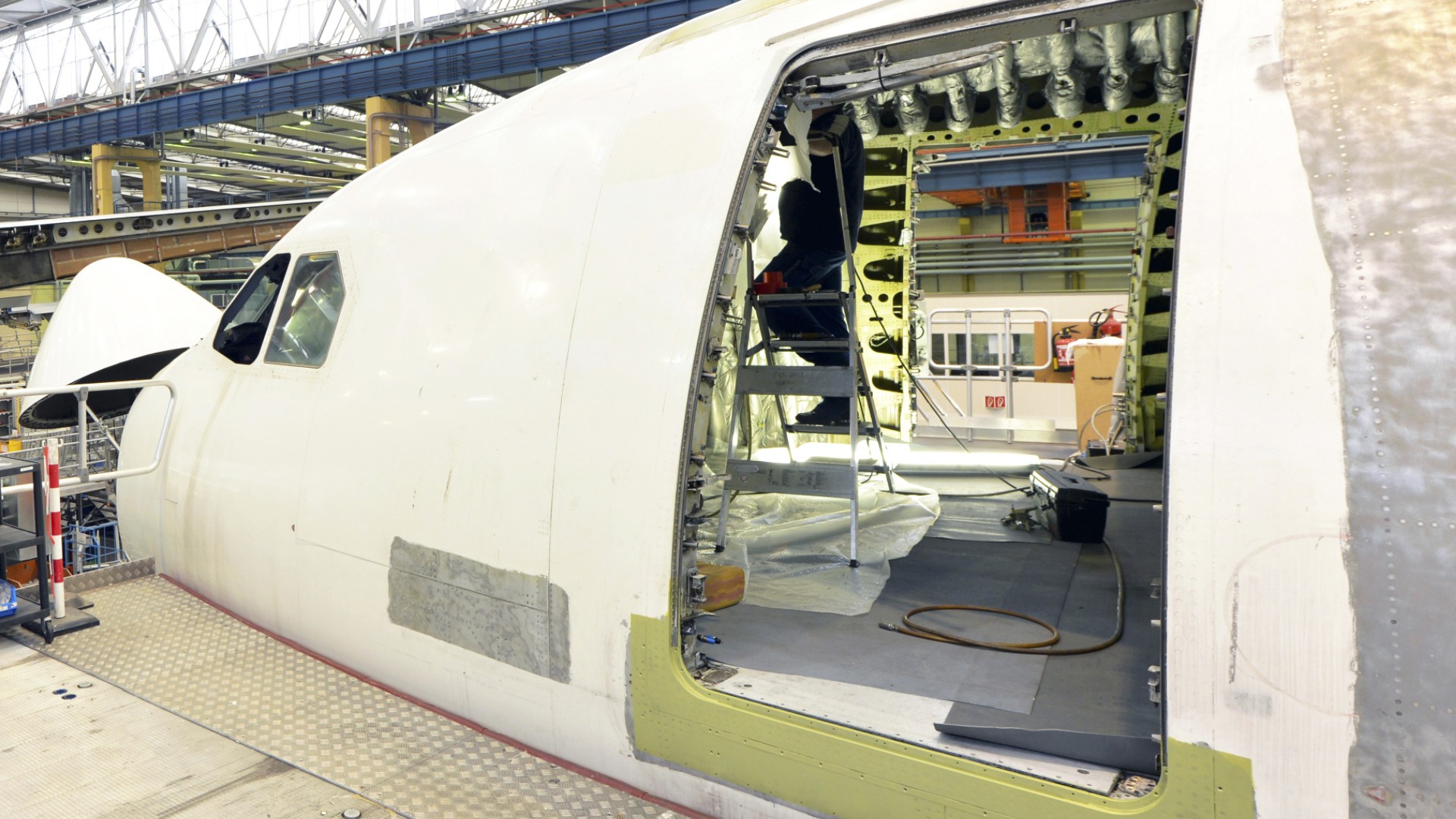Aircraft Structure, Surfaces, Rigging, & Systems Assemblers
Assembler, Sheet Metal Assembler and Riveter (SMAR), Sheet Metal Mechanic, Structures Technician
What they do:
Assemble, fit, fasten, and install parts of airplanes, space vehicles, or missiles, such as tails, wings, fuselage, bulkheads, stabilizers, landing gear, rigging and control equipment, or heating and ventilating systems.
On the job, you would:
- Assemble parts, fittings, or subassemblies on aircraft, using layout tools, hand tools, power tools, or fasteners, such as bolts, screws, rivets, or clamps.
- Read blueprints, illustrations, or specifications to determine layouts, sequences of operations, or identities or relationships of parts.
- Attach brackets, hinges, or clips to secure or support components or subassemblies, using bolts, screws, rivets, chemical bonding, or welding.
Knowledge
Education and Training
- teaching and course design
Math and Science
- arithmetic, algebra, geometry, calculus, or statistics
Arts and Humanities
- English language
Engineering and Technology
- mechanical
Skills
Basic Skills
- keeping track of how well people and/or groups are doing in order to make improvements
- listening to others, not interrupting, and asking good questions
Problem Solving
- noticing a problem and figuring out the best way to solve it
Abilities
Hand and Finger Use
- put together small parts with your fingers
- hold or move items with your hands
Ideas and Logic
- notice when problems happen
- order or arrange things
Verbal
- listen and understand what people say
- read and understand what is written
Personality
People interested in this work like activities that include practical, hands-on problems and solutions.
They do well at jobs that need:
- Cautiousness
- Integrity
- Attention to Detail
- Dependability
- Perseverance
- Achievement Orientation
Technology
You might use software like this on the job:
Spreadsheet software
- Microsoft Excel
Electronic mail software
- Microsoft Outlook
Enterprise resource planning ERP software
- SAP software
Education
Education: (rated 2 of 5)
high school diploma/GED or
certificate after high school
usually needed
certificate after high school
usually needed
Job Outlook
Below Average
New job opportunities are less likely in the future.
Explore More
- Electrical & Electronic Equipment Assemblers
- Electromechanical Equipment Assemblers
- Engine & Other Machine Assemblers
- Layout Workers, Metal & Plastic
- Structural Metal Fabricators & Fitters
You might like a career in one of these industries:
See more details at O*NET OnLine about Aircraft Structure, Surfaces, Rigging, & Systems Assemblers.





